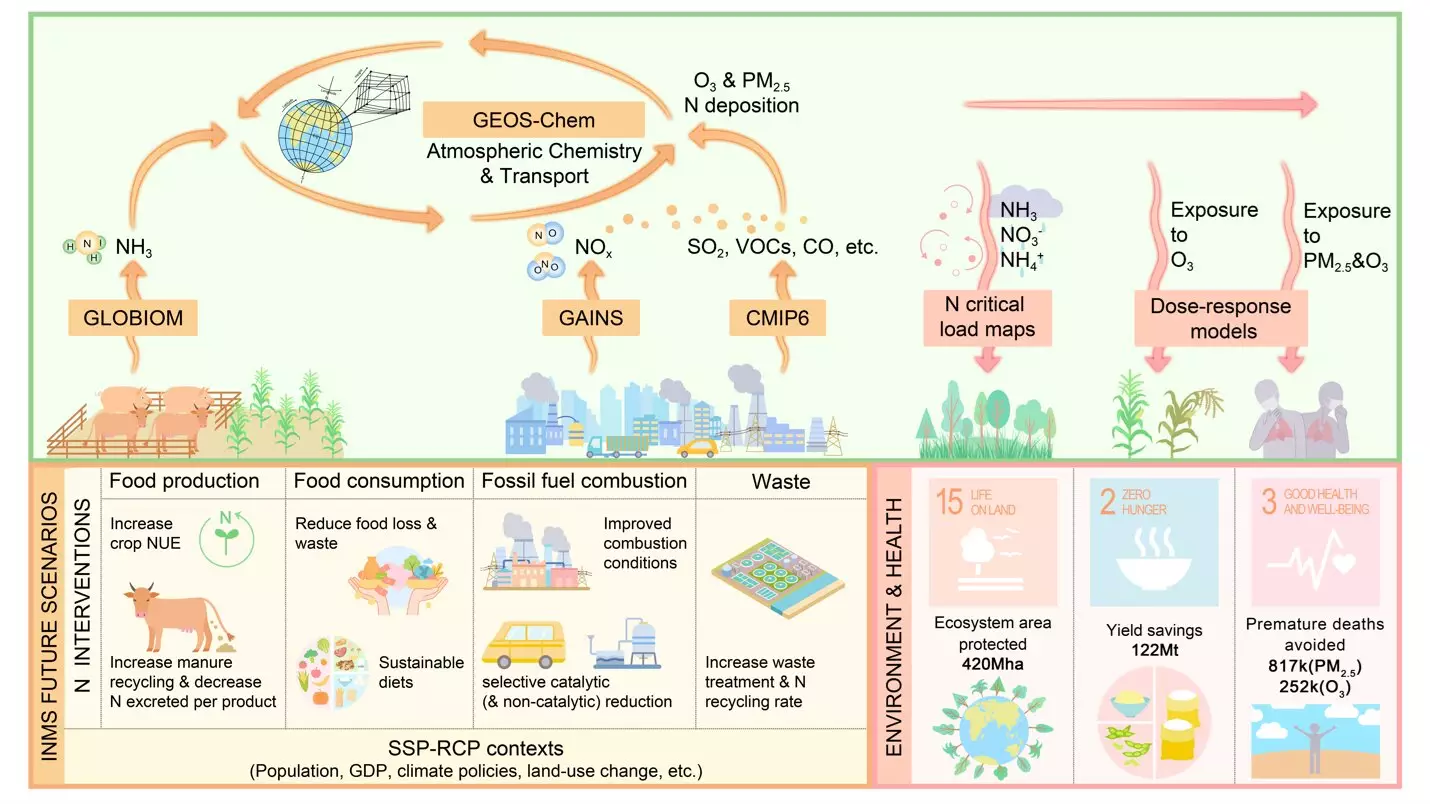The nitrogen cycle is an essential ecological process that plays a vital role in maintaining ecosystem stability. However, it is currently more disrupted than ever, surpassing several planetary boundaries and posing significant risks to both human health and natural environments. The main culprits of this disruption arise from agricultural practices and fossil fuel combustion that release nitrogen by-products, including ammonia (NH3), nitrogen oxides (NOx), and nitrous oxide (N2O). These pollutants do not merely alter the air we breathe; they inflict extensive damage on ecosystems and directly affect agriculture and overall human well-being.
Agricultural practices have significantly contributed to the overload of nitrogen in the environment. The reactive forms of nitrogen that enter the atmosphere not only degrade air quality but also lead to a plethora of health issues, ranging from respiratory conditions to cardiovascular disease. The scale of these challenges intensifies, especially when considering the increasing demands for food and energy driven by a burgeoning global population.
Despite the severity of nitrogen pollution, efforts to mitigate it through technology and policy have not been thoroughly explored. Current research on nitrogen cycles has largely been limited to traditional nitrogen budgets, which focus on tracking the flow of nitrogen across various environmental compartments like air, water, and soil. However, this approach often neglects the complexities of biogeochemical transformations, where nitrogen interacts and changes state within ecosystems.
Similarly, Earth science studies tend to model these transformations within a single environmental context, lacking a comprehensive approach that spans multiple mediums. In bridging these gaps, international research efforts have begun to leverage multidisciplinary techniques to comprehensively evaluate nitrogen interventions. By synthesizing knowledge across fields, meaningful insights can be drawn, particularly in the context of improving air quality and mitigating ecosystem impacts.
A landmark study recently published in Science Advances elucidates various nitrogen interventions that hold potential for substantial benefits. These interventions have various forms: enhancing fuel combustion efficiency, increasing agricultural nitrogen utilization, and addressing food loss and waste. Each of these strategies contributes significantly to the reduction of nitrogen emissions, thereby alleviating the associated burdens on public health and environmental systems.
Lead author Yixin Guo emphasizes the importance of an integrated assessment framework, which merges policy scenarios with various models. This framework proves critical in visualizing how ambitious nitrogen management could drastically reduce air pollutants at localized levels, offering tailored solutions to complex problems. The study indicates that by 2050, innovative nitrogen interventions could reduce global ammonia and nitrogen oxides emissions by as much as 40% and 52%, respectively, compared to 2015 levels. Such reductions are aligned with profound benefits, including the prevention of over 800,000 premature deaths due to air pollution, as well as lower levels of ground-level ozone and improved crop yield resilience.
The study notably highlights the disparate regional impacts of nitrogen interventions. While the entire globe stands to benefit, regions like Africa and Asia, which suffer the most from nitrogen pollution’s adverse effects, are projected to reap the greatest rewards from successful interventions. By 2050, the study indicates that East and South Asia are expected to achieve the largest reductions in nitrogen emissions, primarily through advancements in agricultural practices and technological adoption. These changes can facilitate compliance with health standards set forth by organizations like the World Health Organization, thereby promoting public health.
Moreover, as populations continue to expand, the benefits of these strategies will compound over time, presenting even greater health dividends, especially in developing regions. The research underscores the necessity of recognizing nitrogen management as a multifaceted tool that can aid in achieving several Sustainable Development Goals (SDGs), such as Good Health and Well-being (SDG 3), Zero Hunger (SDG 2), Responsible Consumption and Production (SDG 12), and Life on Land (SDG 15).
Finally, this collaborative research initiative outlines an actionable roadmap for tailored policy recommendations, acknowledging that strategies for nitrogen pollution must be region-specific. It reveals that various solutions can be employed depending on local circumstances, leading to nuanced and effective environmental governance.
Addressing the increasing challenge of nitrogen pollution requires a dual focus on technological innovation and strategic policy intervention. With holistic approaches championed by dedicated research, there exists a significant opportunity to restore the integrity of the nitrogen cycle, thereby safeguarding both human health and ecological resilience for generations to come.


Leave a Reply